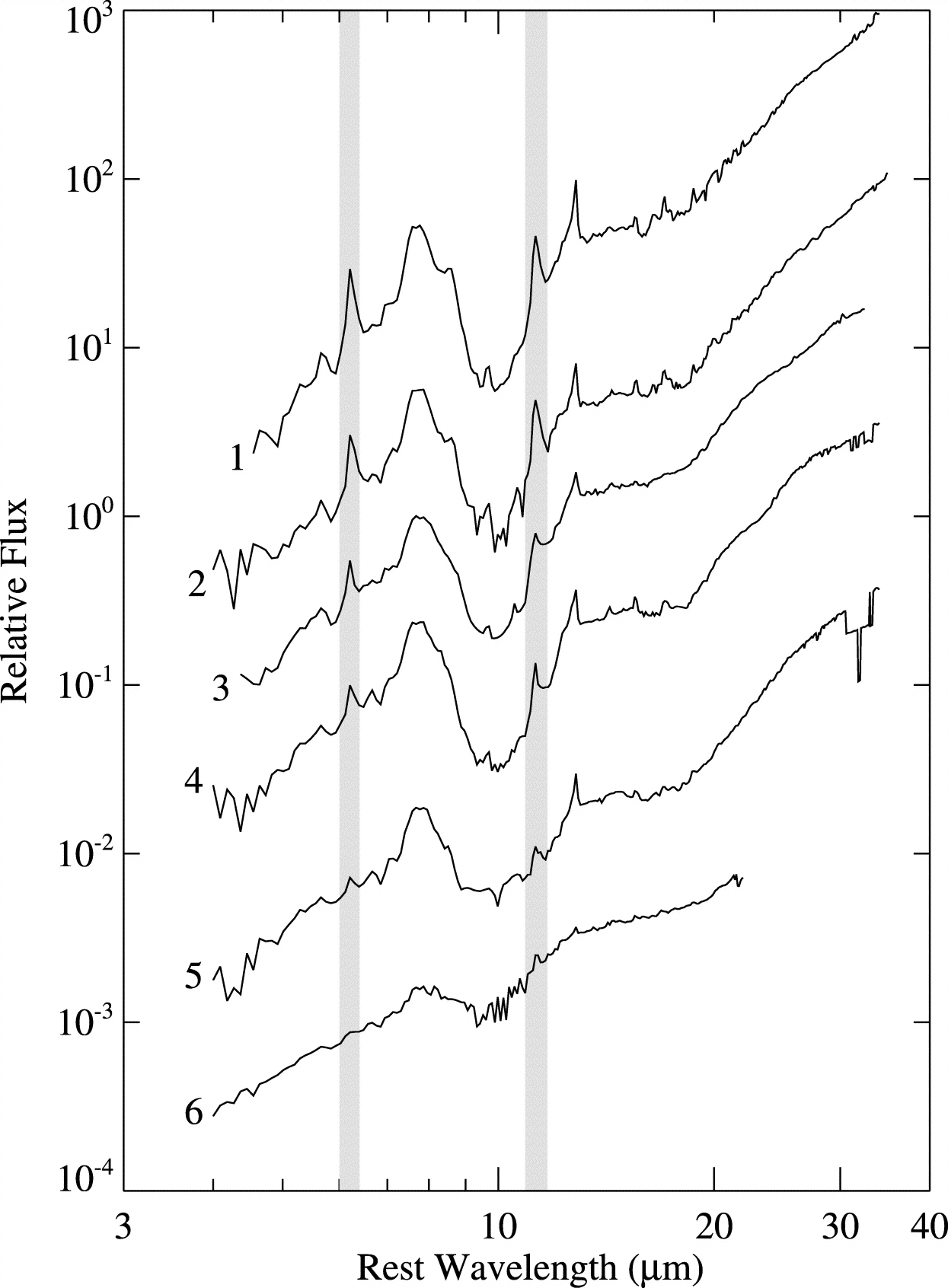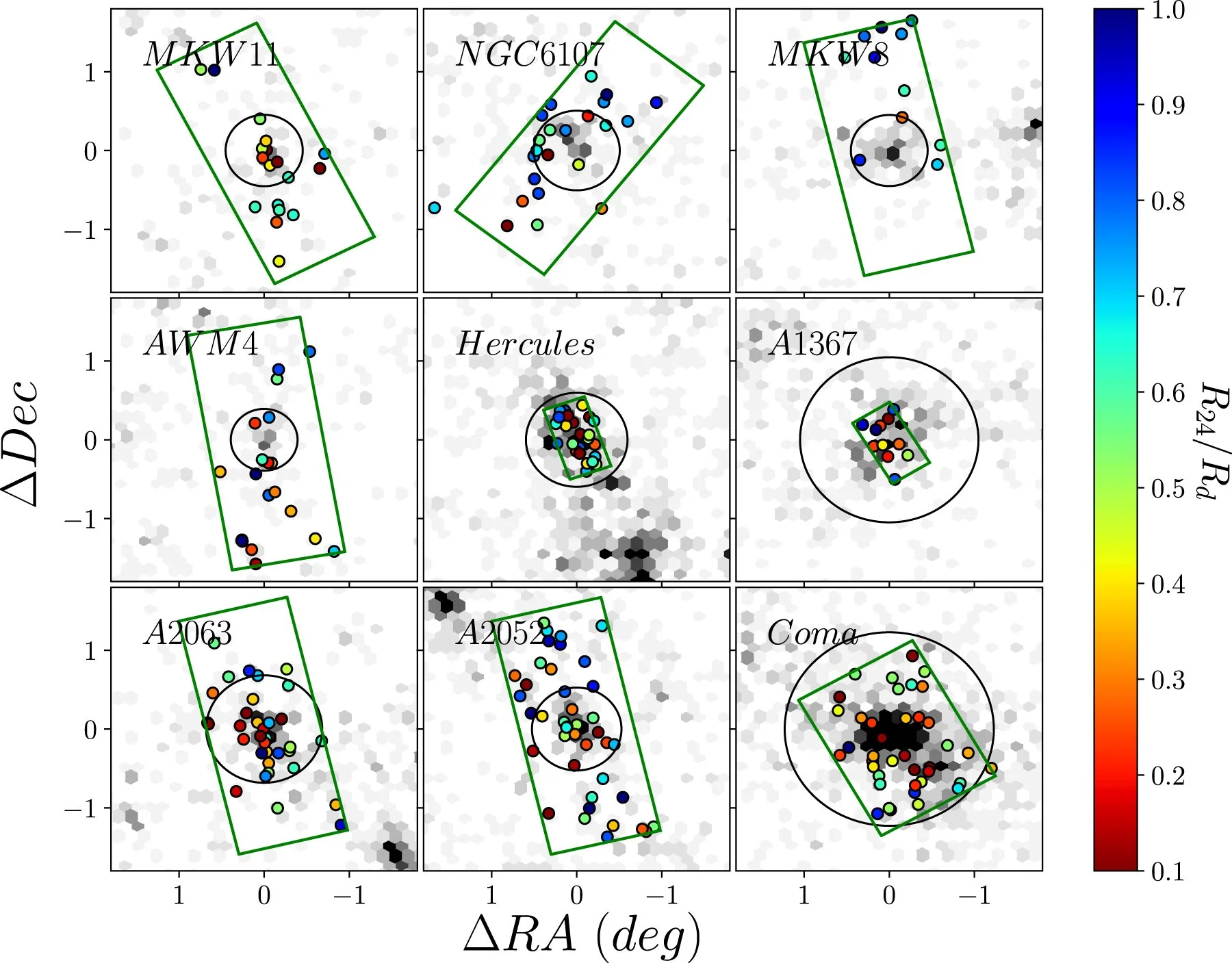Research
Virgo Filaments
It is well established that galaxies residing within clusters tend to have systematically different properties compared to galaxies in lower-density regions. We are measuring the gas content of galaxies within filaments and groups up to several virial radii from the center of the Virgo cluster in order to understand whether galaxies are pre-processed within these environments before they enter dense cluster cores.
Dust Obscured Galaxies
Using large-area survey images obtained with the Spitzer Space Telescope, NASA’s Infrared Great Observatory, we discovered a rare population of galaxies that are very bright in the mid-infrared but nearly invisible at optical wavelengths. Follow-up observations using ground- and space-based facilities revealed these galaxies to be sites of rapid star formation and AGN activity at cosmological lookback times of over 13 billion years.
Ultraluminous infrared galaxies
The Infrared Spectrograph on the Spitzer Space Telescope enabled detailed analyses of the mid-infrared spectra of ultraluminous infrared galaxies (ULIRGs) in the local universe.
Local Cluster Survey
The goal of the Local Cluster Survey is to look for evidence of environmentally-driven quenching among star-forming galaxies in nearby galaxy groups and clusters. Many previous investigations relied on the integrated properties of galaxies. However, the relative size of the stellar and star-forming disk is sensitive to environmental processing and can help identify the mechanisms that lead to a large fraction of quenched galaxies in dense environments. Our analysis is consistent with a long-timescale (>2Gyr) mechanism that produces outside-in quenching, such as the removal of the extended gas halo or weak stripping of the cold disk gas.
Galaxy Evolution in Distant Clusters
My dissertation focused on the European Southern Observatory Distant Cluster Survey (EDisCS). The goal of the survey was to enable studies of the evolution of cluster galaxies over more than 50% of cosmic time. EDisCS was carried out by an international consortium of 25 astronomers from 6 countries.




